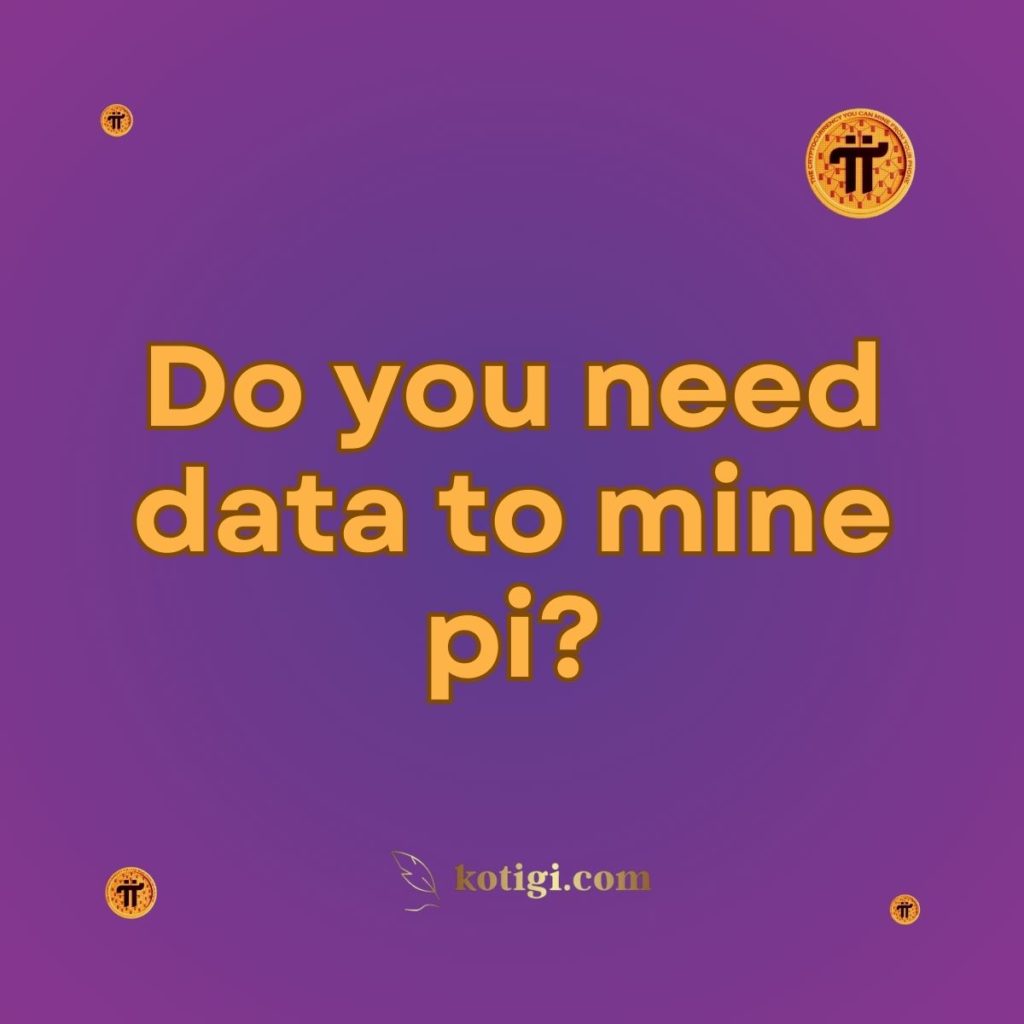
Mining cryptocurrency often requires powerful hardware and consistent internet connectivity, but Pi Network has taken a different approach, allowing users to mine Pi coins directly from their smartphones. One common question from Pi Network users and potential miners is, “Do you need data to mine Pi?” In this post, we’ll dive into the data requirements for mining Pi, how the mining process works, and what users should know to ensure efficient and uninterrupted mining.
What Is Pi Network?
Overview of Pi Network
Pi Network was launched in 2019 by a group of Stanford graduates with the goal of making cryptocurrency accessible to everyone. Unlike Bitcoin or Ethereum, where mining requires significant computational power and electricity, Pi Network allows users to mine Pi through a mobile app. This mining process is energy-efficient, user-friendly, and does not require technical expertise.
How Does Pi Mining Work?
Mining Pi is as simple as opening the Pi app and pressing the “Mine” button once every 24 hours. When you press the button, your mining session begins, and Pi is automatically generated in your account. You don’t need to keep the app open or your phone connected to the internet for the entire session. The Pi Network app will continue mining in the background without using much power, making it an accessible and convenient way to participate in cryptocurrency mining.
Do You Need Data to Mine Pi?
Initial Connection Requirement
Yes, you do need data or an internet connection to start the mining process each day. Every 24 hours, when you open the Pi Network app to activate mining, the app requires a brief internet connection to verify your account, connect to the network, and begin mining. This initial connection ensures that you’re logged into the network and your activity is recorded accurately.
However, the good news is that after this initial data connection, the app does not require continuous internet to mine Pi. Once you’ve activated mining, the app will continue mining Pi in the background, even if you disconnect from the internet.
How Much Data Is Needed?
The amount of data required to activate mining is extremely minimal. Pi Network is designed to be data-efficient, ensuring that users in areas with limited data or unreliable internet access can still participate in mining. On average, starting the mining session consumes only a few kilobytes (KB) of data. This is comparable to sending a simple text message or refreshing a small webpage.
Offline Mining Capabilities
Once the mining process begins, you can turn off your data or disconnect from Wi-Fi without affecting your mining session. The Pi app will continue running in the background, and your phone does not need to be connected to the internet. At the end of the 24-hour mining session, you’ll need to reconnect to the internet briefly to restart mining for the next day.
Data Usage Compared to Other Cryptocurrencies: Pi vs. Traditional Mining
Unlike traditional cryptocurrencies like Bitcoin or Ethereum, which require constant online connectivity and high-performance hardware, Pi’s unique consensus algorithm, the Stellar Consensus Protocol (SCP), does not require constant data or electricity usage. Mining Bitcoin, for example, involves large data exchanges between miners and the blockchain, as well as complex mathematical calculations, leading to high data and energy consumption.
Pi, on the other hand, was designed to be lightweight and mobile-friendly. It focuses on security and decentralization without requiring users to invest in expensive equipment or data plans. This makes Pi Network more accessible to users in regions where data is expensive or unreliable.
Can You Mine Pi Without Any Internet Access?
The Role of Internet in Pi Mining
While you don’t need a constant internet connection to mine Pi, it’s important to note that you cannot mine Pi without any internet access at all. The app needs to connect to the Pi Network to verify your account and record your mining activity. This brief internet connection is essential for starting the mining session, but once the process is initiated, you can go offline without interrupting the mining.
Using Wi-Fi or Data-Saving Methods
If you’re concerned about using mobile data to mine Pi, you can minimize data usage by activating the Pi app while connected to Wi-Fi. After starting the mining session, you can switch off Wi-Fi or data, knowing that the app will continue to mine in the background. This makes Pi an ideal cryptocurrency for people who want to conserve mobile data.
Additionally, since Pi mining only requires a minimal data connection once per day, users with limited data plans can still participate without worrying about excessive usage.
Advantages of Pi’s Minimal Data Requirements
Accessibility in Low-Bandwidth Areas
One of the main advantages of Pi Network’s design is its accessibility in regions with limited internet connectivity. In many parts of the world, reliable internet access is expensive or difficult to maintain. By requiring only a brief connection to start mining, Pi ensures that users in these regions can still benefit from cryptocurrency mining without needing to invest in high-bandwidth data plans.
Energy Efficiency
Pi mining not only minimizes data usage but also limits energy consumption. Traditional mining operations can drain phone batteries quickly, especially if they require constant connectivity. Since Pi does not rely on energy-intensive processes, you can mine Pi without worrying about excessive battery drain, even when your phone is offline.
The Future of Pi Network and Data Requirements
Will Data Requirements Change in the Future?
As Pi Network evolves and transitions fully into its Mainnet phase, it’s possible that certain features or functionalities could require more consistent data connections. For example, participating in transactions or using decentralized applications (dApps) built on Pi’s blockchain might require users to stay connected to the internet. However, the core mining process is unlikely to change significantly in terms of data requirements, as Pi’s founders have emphasized accessibility as a key part of the network’s mission.
What to Expect in the Mainnet Phase
Once Pi transitions to its Mainnet, it’s expected that Pi coins will become tradable on cryptocurrency exchanges. While mining Pi will continue to be data-efficient, additional network features like transacting Pi or interacting with other network users might require more frequent internet use. However, the basic daily mining process will likely remain the same.
Conclusion
So, do you need data to mine Pi? The answer is yes—but only briefly. Mining Pi requires a minimal internet connection to start the mining session, but after that, you can mine Pi offline without using additional data. The Pi Network app is designed to be lightweight, mobile-friendly, and accessible to users in low-bandwidth regions. This makes Pi one of the easiest and most efficient cryptocurrencies to mine, even for users with limited data or unreliable internet connections.
Do you need data to mine pi?
Yes, you need a brief internet connection to start mining Pi each day. However, once the mining session is activated, you can go offline, and Pi will continue mining in the background without using additional data.
Key Takeaways
- As Pi Network evolves, future features like transactions or dApps may require more consistent data use, but the core mining process will remain data-friendly.
- You need data to start mining Pi, but the amount of data required is minimal—just enough to connect to the network.
- Once the mining session starts, you can go offline, and Pi will continue to mine in the background.
- Pi Network is data-efficient, making it accessible to users with limited or expensive data plans.
- Pi mining is ideal for low-bandwidth areas since it requires only a brief daily connection to mine coins.





